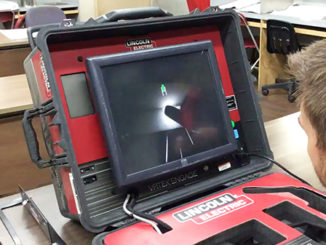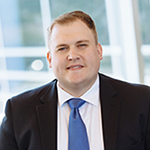
Using partnerships to define great practices
By / Stephane McShane
How do you define best practices and create synergy between work groups at the same time? Change the way you view improvement initiatives within your organization.
For those who spend their lives making lasting change truly happen, their success isn’t defined by luck. It is facilitated by their ability to take disparate groups of people who all play a role in a workflow, leverage their skill sets and viewpoints, and define how work should be done, in contrast to how work is currently done.
Take, for instance, the change order management process. If you look at the level of risk associated with this process, and the extreme amount of detailed, factual information needed to successfully substantiate impacts, this becomes a prime example of a workflow that needs to have standardized work steps. It takes a strong partnership between field operations and project operations to be highly successful and effective in this area.
If improvement is desired in any given functional area, following the work steps below may assist in creating pathways that make sense to the very people in your organization who could make it successful.
Step 1 – Define the Team
Identify the different job titles involved in the change order process to provide a roadmap of potential team members. The team should represent a cross-section of staff who all play a role in the success of the change order management process. For the example, this should represent employees from estimating, project management, project administration, field leadership, and accounting. Others who could be included, depending on the specific organizational challenges, might be purchasing, manufacturing, and design. Be cognizant to pick respected personnel who would be engaged in helping to define a new—and improved—process.
Step 2 – Map Current Processes
Have the group define the starting and end points. Using a value stream mapping process or other structured work step identification method, allow each team member to identify each individual step in the process from the identified starting point to the defined end point. Have them work collaboratively to list each activity chronologically from start to finish, eliminating any duplications.
Step 3 – Identify and Solve Needed Areas of Improvement
Once the current processes have been mapped out, open a discussion to identify the areas requiring improvement and ensure standards encompassing notification, documentation, pricing, proposals, terms and conditions, and more are in place. These are critical steps in effective risk mitigation. Prioritize and complete the list of necessary improvements by dividing and conquering the challenges. Leverage the skillsets of the diverse team to define the most logical solutions for the organization.
Step 4 – Document New Workflow
Document the new workflow using process flow charts or process maps. These will serve as a reference and be used during training. The workflow documents should contain relevant examples of documents, timing, videos, or other required materials so someone new to the process can easily follow along. It should also outline the job title that should perform each work step, ensuring that the right person at the right level in the organization is performing the work. Once this workflow is defined, it should be presented to the executive team to ensure their understanding and agreement with the contents.
Step 5 – Define Training Materials and Identify Subject Matter Experts
Using a cross-section of staff from the field to the office to define the new process allows the team to identify which of these individuals should act as internal subject matter experts for the initiative. Define the best methods of delivering training to the different groups within the organization, as well as timing, length of training, small or large groups, and the right trainer to present the material. These people now become the peer experts so coworkers can come to a peer for additional training or questions, negating the discomfort of having to go to a superior.
Step 6 – Roll out Initiative and Train
Initiative roll-out and training should always discuss the topic in the following order:
- Why this initiative is so important.
- What’s in it for the attendees (how do they benefit)?
- Show the new initiative.
- Define expectations.
- Discuss subject matter experts’ availability and roles.
- How the initiative’s impacts will be measured.
- Re-state importance and benefits.
Step 7 – Identify and Track Metrics
The team should define how the organization measures success, whether the process is being followed, those responsible for verifying, and how to assign done/not done, % implementation, or ROI. Improvements cannot be measured unless there is an understanding of where we started and where we are today, compared to the standard defined by the team. It is also important to know what the end game is, whether a targeted financial goal, % improvement, or other measurement.
Step 8 – Celebrate Success
This is a step that is far too often skipped. When benchmarks are reached or specific project teams find success using the new initiative, it is a prime opportunity to celebrate. It is critical to point out how the new process helped the project team and to discuss the financial or operational impact it had. Leveraging one group’s success to feed fuel to others who may still be struggling or undecided is an outstanding practice, though not done nearly often enough.
Using cross-functional teams solidifies the roles and processes needed to be successful and allows those groups to work together to define the path. These opportunities should drive operational excellence and an organizational culture that people want to be a part of.
Stephane McShane is a Director at Maxim Consulting Group responsible for the evaluation and implementation processes with clients. She works with construction related firms of all sizes to evaluate business practices and assist with management challenges. McShane is an internationally recognized speaker, mentor, author, and teacher. Her ability to motivate, inspire, and create confidence among work groups is extremely rare and very effective. ■
Stephane will host a Supervisor Training Program titled “Enabling Success – Creating Alignment Between Field and Office” for SMACNA-BC members on September 19 at the Civic Hotel, Surrey, BC. Contact the SMACNA-BC office to register.



